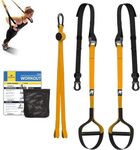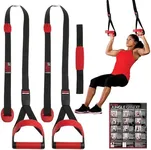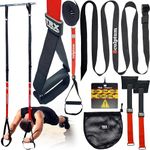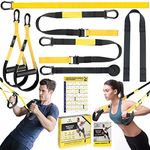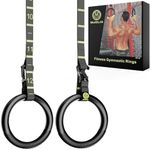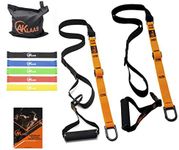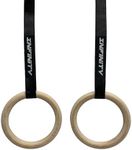Buying Guide for the Best Suspension Trainers
Suspension trainers are versatile pieces of fitness equipment that use your body weight and gravity to provide resistance for a wide range of exercises. They are great for building strength, improving balance, and enhancing flexibility. When choosing a suspension trainer, it's important to consider several key specifications to ensure you get the best fit for your fitness goals and needs.Weight CapacityWeight capacity refers to the maximum weight that the suspension trainer can safely support. This is important to ensure the equipment can handle your body weight plus any additional force exerted during exercises. Suspension trainers typically have weight capacities ranging from 300 to 1000 pounds. If you are heavier or plan to use the trainer for intense workouts, opt for a higher weight capacity to ensure safety and durability.
AdjustabilityAdjustability refers to how easily you can change the length of the straps to accommodate different exercises and user heights. This is important for versatility and comfort during workouts. Look for suspension trainers with easily adjustable straps and clear markings to help you quickly set the desired length. If you plan to share the trainer with others or use it for a variety of exercises, high adjustability is crucial.
Anchor PointsAnchor points are the locations where the suspension trainer can be attached, such as doors, beams, or outdoor structures. This is important for ensuring you can use the trainer in various settings. Some trainers come with multiple anchor options, while others may be limited to specific types. Consider where you plan to use the trainer most often and choose one with compatible anchor points for maximum convenience and versatility.
PortabilityPortability refers to how easy it is to transport and set up the suspension trainer. This is important if you plan to use the trainer in different locations or take it with you while traveling. Look for lightweight models that come with a carrying bag and have a compact design. If you need a trainer that you can easily move around or take on the go, prioritize portability.
Handles and Foot CradlesHandles and foot cradles are the parts of the suspension trainer that you hold onto or place your feet in during exercises. This is important for comfort and grip during workouts. Look for trainers with ergonomic, non-slip handles and comfortable, adjustable foot cradles. If you plan to do a variety of exercises, including those that require foot support, ensure the handles and cradles are well-designed and comfortable.
Material QualityMaterial quality refers to the durability and construction of the suspension trainer. This is important for ensuring the trainer can withstand regular use and last a long time. Look for trainers made from high-quality, durable materials such as reinforced nylon straps and sturdy metal components. If you plan to use the trainer frequently or for intense workouts, prioritize high material quality to ensure longevity and safety.
